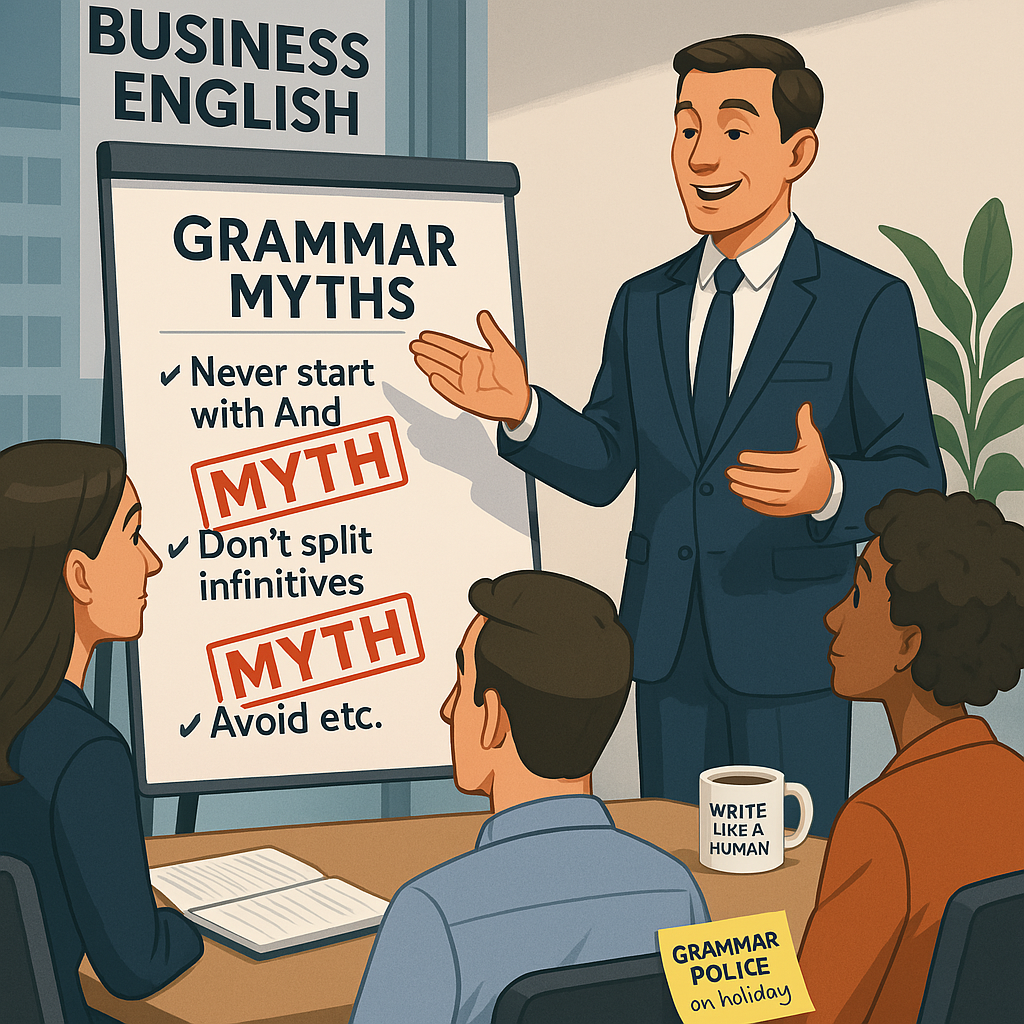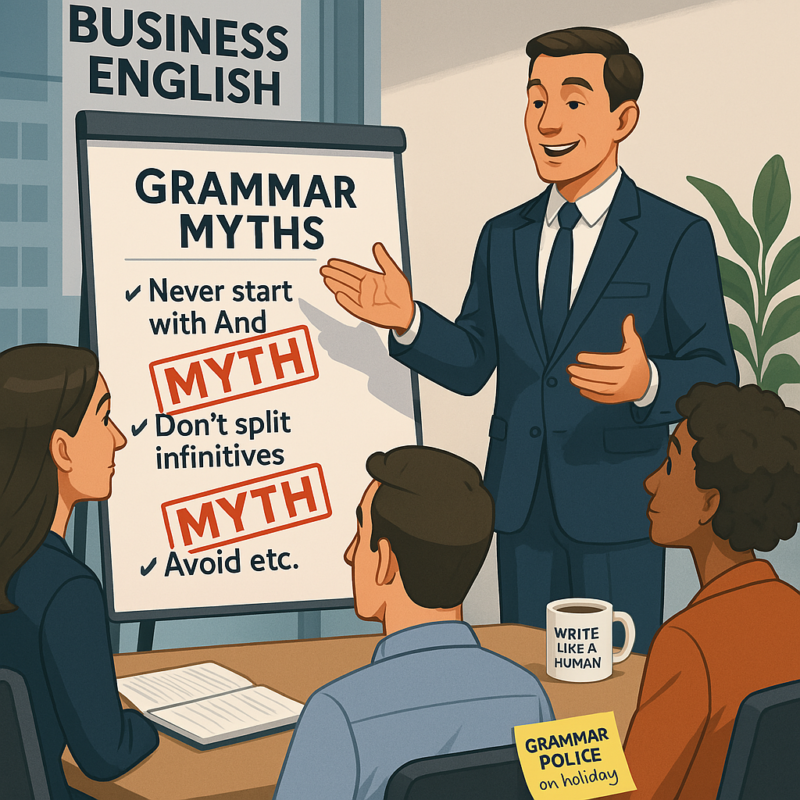
We’ve all been there. You’re writing an email, a proposal, or a LinkedIn post—and suddenly, you hesitate.
Can I start a sentence with “And”?
Is it okay to use contractions?
Will someone judge me for ending with a preposition?
Business English is full of myths. Some are leftovers from school. Others come from well-meaning advice that’s no longer relevant. And some just make us second-guess ourselves.
Let’s clear the air.
Myth 1: Never start a sentence with “And” or “But”
The myth: Starting a sentence with a conjunction is grammatically incorrect.
The truth: Coordinating conjunctions (and, but, or, so) can start sentences when used to connect ideas clearly.
And that’s exactly why we’re expanding the team.
But we’re not stopping there.
It’s not lazy—it’s modern.
In spoken English, we do this all the time. Written English is simply catching up.
Grammar tip: A coordinating conjunction joins two ideas. Starting a sentence with one is a stylistic choice, not a mistake.
Myth 2: You must always write in complete sentences
The myth: Every sentence must have a subject and a verb.
The truth: Sentence fragments can be effective in business writing—especially for emphasis or rhythm.
No delays. No excuses. Just results.
These are technically fragments, but they’re clear, punchy, and purposeful.
Grammar tip: A sentence fragment lacks a full clause (subject + verb), but if the meaning is obvious and the tone is intentional, it works.
Myth 3: Passive voice is always wrong
The myth: Passive constructions are weak and should be avoided.
The truth: Passive voice is useful when the focus is on the action or when the actor is unknown or irrelevant.
The report was submitted on time.
The decision was made after careful consideration.
Grammar tip: In passive voice, the object of an action becomes the subject of the sentence.
Active: The team submitted the report.
Passive: The report was submitted (by the team).
Use it when it helps your message—not when it hides responsibility.
Myth 4: Contractions are unprofessional
The myth: Contractions make writing informal or sloppy.
The truth: Contractions (we’re, don’t, it’s) are widely accepted in business communication, especially in emails, blogs, and presentations.
We’re excited to share the results.
It’s been a productive quarter.
They make your tone more approachable and natural.
Grammar tip: A contraction is a shortened form of two words (e.g. we are → we’re). They’re grammatically correct and stylistically flexible.
Myth 5: You can’t end a sentence with a preposition
The myth: A sentence must never end with a preposition.
The truth: This rule is outdated and often leads to awkward phrasing.
That’s the team I was talking about.
Here’s the proposal we agreed on.
Compare that to:
That’s the team about which I was talking.
Here is the proposal on which we agreed.
Technically correct? Yes.
Pleasant to read? Not really.
Grammar tip: A preposition shows the relationship between words (e.g. on, about, with). Ending with one is fine if it makes the sentence clearer and more natural.
So what’s the takeaway?
Business English isn’t about following outdated rules. It’s about clear, confident communication. If your grammar choices help your message land better, they’re probably the right ones.
Try breaking a few rules this week. You might just find your writing flows better—and connects more.
Coming up in Part 2:
We’ll tackle more myths—like whether “I” is always better than “me,” and if you’re really not allowed to split an infinitive. Spoiler: you are.
Thanks for reading,
Stuart


